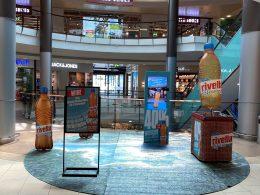The Department of Biomedical Engineering (DBE) in Allschwil, which is supported by the University Hospital Basel (USB) and the University of Basel, has been researching VR technology for some time. The aim is to facilitate and improve the treatment of patients at various levels. A breakthrough has been achieved in the field of surgical technology.
Under the leadership of Prof. Philippe Cattin, head of the DBE, groundbreaking achievements have been made in the MIRACLE (Minimally Invasive Robot-Assisted Computer-guided LaserosteotomE) project at the University of Basel: the project aims to enable minimally invasive laser surgery. Navigation software is also being developed for this purpose, which is intended to help prepare operations and simplify procedures during surgery.
The body becomes three-dimensional
Over the past three years, the team has developed the software SpectoVR, which converts patient data such as computer tomography (CT)-based information in real time and displays it in three dimensions. Until now, a patient's CT data could only be viewed on two-dimensional screens. These were therefore "flat" images. Now, with the help of 3D glasses and the software SpectoVR, surgeons can navigate through 3D models of a patient's body in advance and prepare themselves accordingly for the interventions. Thanks to SpectoVR, tissue parts, bones or even blood vessels can be viewed from all sides.
"The doctor gets a much more accurate picture and can prepare interventions in a more differentiated way," says Prof. Philipp Cattin. says Prof. Philippe Cattin.
Deployed at the Unispital Basel
There have already been numerous enquiries from hospitals worldwide who would like to benefit from this technology. The use of SpectoVR-based 3D glasses is now being tested for the first time at the University Hospital Basel (USB). Since 1 January 2018, all planned operations on aneurysms of the cerebral vessels at the USB have been prepared with the help of SpectoVR and rehearsed, so to speak. Another unique feature is that different surgeons can access the same 3D patient data simultaneously from different locations.
Raphael Guzman, Prof. Neurosurgeon: "SpectoVR brings us a new dimension in the preparation of complex interventions. Virtual immersion in the human brain allows us, for example, to view and better understand the intricacies of the diseased vessels in an aneurysm from all directions. It makes the operation safer and probably shorter."

Spinal specialists are also increasingly using SpectoVR in spinal surgery at the USB. The first operation planned with SpectoVR was a case of ankylosing spondylitis, a complex deformity with inflammatory stiffening of the spine.
Freedom for the new technology
Based on the positive feedback from these pioneers and the promising possibilities for further use at the USB, a total of four rooms in surgery and radiology at the USB will now each be equipped with two SpectoVR glasses.
Two further rooms are planned: one in the University Children's Hospital of Basel and one in the eye clinic of the USB. The data generated via the glasses is to be connected to the HIS information system of the USB to enable efficient data access throughout the hospital
Source: Gazzetta









